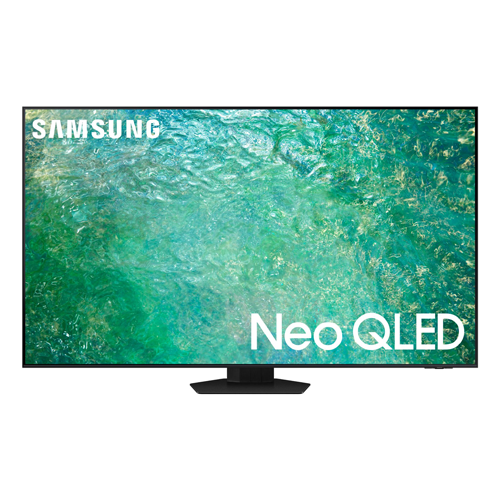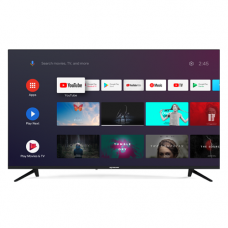
Which Type of TV Display Is Best for Your Home?
Televisions have come a long way since they were first introduced to the public in the late 1920s. Gone are the days when people had no other option but to buy bulky TV sets that can only show footage in black and white. Today’s shoppers are spoiled for choice, and they can easily find TVs that match their specific viewing preferences and budgets.
Perhaps you’re in the market for a TV yourself, and you’re not certain which of your options is best suited to your needs. You know exactly what you want, but the problem may be that the description of the TV models that you are looking at does not make any sense to you. For example, you might be familiar with Samsung appliances and the quality the brand offers, but what is an OLED TV, and is it worth its price? To make an informed purchase, it’s important to familiarize yourself with the different display technologies that today’s TVs use. This way, you can determine if a model has the characteristics you are looking for. Here are the most common TV displays on the market:
Digital Light Processing (DLP)
DLP TVs first became available to the public in the 1980s, but their performance is similar to today’s LED TV. This technology makes use of a digital micrometer device (DMD), which is a semiconductor chip upon which microscopically small mirrors are arranged in a matrix formation. These mirrors can be as small as 5.4 micrometers, and they represent one or more pixels when projecting an image. The resolution of a DLP TV reflects the number of mirrors that its DMD has. TVs that feature this type of display technology produce an image by toggling the mirrors on and off.
The images that DLP TVs and projectors produce can be quite crisp, and they feature an excellent contrast ratio. However, they can also produce a rainbow effect that may bother some people. Also, DLP TVs are often thicker than TVs that use later display technologies. As such, they may not exactly be the best choice if you want a slick frame on your wall or console.
Plasma Display Panels (PDP)
Plasma display panels are called such because they use plasma in the form of ionized gas. This display technology makes use of small cells to keep the ionized gas contained, and the ionized gas responds to electric fields. TVs that use PDP are often larger than 30 inches since it’s not economical to manufacture smaller TV sizes that use this particular technology. Plasma TVs offer a few advantages, such as wider viewing angles, less visible motion blur, and uniform brightness levels. At the same time, though, the technology is susceptible to screen burn-in and image retention. These models are also often heavier and consume more electricity compared to LCD TVs.
Liquid Crystal Display (LCD)
Liquid crystal display technology is widely used in a lot of different appliances and applications, including outdoor signage, computer monitors, watches, and calculators. The shape of the liquid crystals is manipulated by the application of electric fields, and this manipulation can result in different levels of gray, though color filters can be used to generate subpixels that have red, blue, or green in them. Since LCD technology does not produce light on its own, it has to be backlit. The need for a backlight generated two types of LCDs. The first type uses a traditional cold cathode fluorescent lamp (CCFL), while the other uses a light-emitting diode (LED). The latter type is better known as LED-backlit LCDs or LEDs. TVs that make use of LCD are quite popular, and these units became the most widely produced and sold TV types in the 2010s.
Organic Light-Emitting Diode (OLED)
Organic light-emitting diode displays make use of a layer of organic semiconductor set between two electrodes. OLED TVs do not require backlighting, as they can produce light on their own. Because of this, TVs that make use of OLED technology can be sleeker and thinner than TVs that use LCD and LED. Also, OLED TVs are capable of producing true black color, which is needed to project a lifelike image. This, in turn, prevents color shifts even when viewing the TV from an angle.
Quantum Light-Emitting Diode (QLED)
One of the latest in display technology, QLED represents the next generation of LED TVs. This is considered the current pinnacle of TV technology, and it’s capable of delivering exceptional image quality. What makes this TV display different from its predecessors is that it has an LED backlight that projects into a layer of semiconductor nanoscale crystals called quantum dots. This type of display is brighter than an LCD TV despite using less energy. It’s a good fit for your home if you have the budget and you want to future-proof your entertainment system.
Of course, there are other considerations that you have to think about when purchasing a TV for your home, such as its size, price, and function. However, if you’re familiar with the pros and cons of the different display technologies used in TVs, you’ll have an easier time picking the model that will give you the most bang for your buck.
Related Products
- Sold Out10% Off
 [wc-ps tag="span"]Compare
[wc-ps tag="span"]Compare- QuantumMatrix Technology
- Neural Quantum Processor 4K
- Dolby Atmos
- Smart Hub
- HDR (High Dynamic Range)
Original price was: ₱277,999.00.₱249,999.00Current price is: ₱249,999.00.TV Resolution : 4K - QLEDTV Size : 55INCH - UPTV Technology : Smart - Sold Out10% Off
 [wc-ps tag="span"]Compare
[wc-ps tag="span"]Compare- 50” AndroidTV
- Android 10.0
- Wi-Fi Ready
- 4K UHD Ready
- Bluetooth 5.0
- Smart Remote (AI)
- Chromecast Built-in
- Voice Control
- Dolby Audio
- Frameless
- Pre-Installed Application: Netflix & YouTube
- Google Play
- Free Wall Bracket
Original price was: ₱21,995.00.₱19,800.00Current price is: ₱19,800.00.TV Technology : AndroidTV Size : 48INCH - 50INCH















